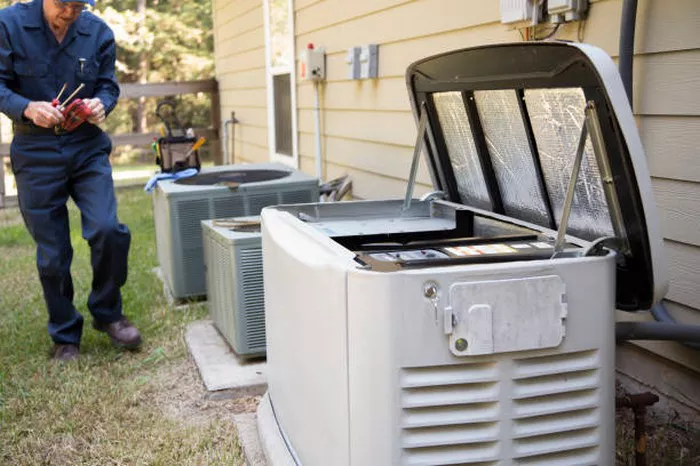Electrical equipment encompasses a wide range of devices and systems designed to use, transmit, control, or convert electrical energy. These devices play a pivotal role in modern life, driving industries, enabling communication, ensuring safety, and powering countless technologies that improve human efficiency and convenience. This article will explore the definition, working principles, classifications, and practical applications of electrical equipment, while also delving into key maintenance and safety considerations.
Definition of Electrical Equipment
Electrical equipment refers to any machinery or device that is powered by electricity to perform a specific function. These devices either use electrical energy to perform mechanical tasks, convert it into other forms of energy (e.g., light, heat), or process and control electrical signals. Common examples include motors, transformers, circuit breakers, relays, and lighting systems.
Fundamental Principles of Electrical Equipment
Electrical equipment operates on the principles of electrical energy generation, transmission, and utilization. The core principles include:
Electric Current Flow: Electrical equipment relies on the flow of electric current, which is driven by a voltage difference. Conductors, like copper or aluminum, facilitate this flow, while insulating materials restrict it to ensure safety.
Electromagnetic Induction: Many devices, such as motors and transformers, utilize electromagnetic induction, where a changing magnetic field induces an electric current in a conductor.
Resistance and Impedance: Resistance limits current flow, converting some electrical energy into heat. Impedance extends this concept to AC circuits, including the effects of inductance and capacitance.
Energy Conversion: Electrical equipment often converts electrical energy into other forms:
- Motors convert electrical energy into mechanical energy.
- Heaters transform it into thermal energy.
- Lights (LEDs, incandescent bulbs) convert it into light energy.
Classifications of Electrical Equipment
Electrical equipment can be categorized based on various factors, such as its function, the type of electrical energy used, or its role in an electrical system.
1. By Function:
Power Generation Equipment: Includes generators, solar panels, and wind turbines that convert mechanical energy or sunlight into electrical energy.
Power Transmission and Distribution Equipment: Transformers, circuit breakers, and switchgear ensure the safe and efficient transmission of electricity from generation plants to end-users.
Power Utilization Equipment: Devices like motors, heaters, and lighting systems use electricity for various tasks.
2. By Electrical Energy Type:
AC Equipment: Operates on alternating current, commonly used in power grids and industrial systems.
DC Equipment: Operates on direct current, often found in batteries, solar power systems, and electronics.
3. By System Role:
Active Components: Include devices like transistors and diodes, which control the flow of electrical energy.
Passive Components: Resistors, capacitors, and inductors store or dissipate electrical energy without amplifying signals.
Common Types of Electrical Equipment
Below are detailed explanations of some common types of electrical equipment:
1. Electric Motors
Electric motors convert electrical energy into mechanical energy through the interaction of magnetic fields. They are categorized into:
AC Motors: Used in industrial fans, compressors, and pumps.
DC Motors: Found in small appliances, electric vehicles, and robotics.
2. Transformers
Transformers change the voltage level of alternating current to ensure safe and efficient transmission. A step-up transformer increases voltage for transmission, while a step-down transformer decreases it for end-use.
3. Circuit Breakers
These are safety devices designed to interrupt the flow of electricity in case of an overload or short circuit, preventing damage to equipment and reducing fire risks.
4. Relays
Relays are electrically operated switches that control circuits by opening or closing contacts in response to an electric signal. They are widely used in automation and protective systems.
5. Lighting Equipment
Electrical lighting systems, including incandescent bulbs, fluorescent tubes, and LEDs, are integral to homes, offices, and industrial spaces.
Applications of Electrical Equipment
Electrical equipment serves diverse applications across industries and sectors:
Industrial Applications:
- Electric motors power machinery in manufacturing.
- Transformers ensure efficient energy distribution in factories.
- Programmable logic controllers (PLCs) automate complex processes.
Residential Applications:
- Lighting and heating equipment enhance comfort.
- Home appliances like washing machines and refrigerators simplify daily tasks.
- Circuit breakers provide electrical safety.
Transportation:
- Electric vehicles (EVs) rely on electric motors and batteries.
- Railway systems use transformers and rectifiers for traction power.
Healthcare:
- Equipment like X-ray machines, MRIs, and ventilators operate on electricity.
- Uninterruptible power supplies (UPS) ensure continuous power to critical systems.
Communication and IT:
- Servers and networking equipment rely on uninterrupted electrical power.
- Power supplies and converters are vital for electronic devices.
Maintenance of Electrical Equipment
Proper maintenance ensures the longevity, safety, and efficiency of electrical equipment. Key practices include:
Regular Inspections: Periodic visual and operational checks help identify wear, corrosion, or damage.
Testing and Calibration: Equipment like relays and sensors require regular testing to maintain accuracy.
Cleaning: Dust and debris can hinder performance, particularly for cooling systems and electrical contacts.
Lubrication: Motors and other moving parts need lubrication to reduce friction and wear.
Thermal Scanning: Detects overheating components, a sign of potential issues.
Safety Considerations
The operation of electrical equipment involves inherent risks. Following safety protocols minimizes accidents:
Use of Personal Protective Equipment (PPE): Insulated gloves, safety glasses, and footwear reduce shock and burn risks.
Lockout/Tagout (LOTO): Ensures machinery is de-energized before maintenance or repair.
Proper Grounding: Protects against electrical faults and prevents electrocution.
Adherence to Standards: Compliance with standards like IEC, NEC, or OSHA ensures safe design and usage.
Conclusion
Electrical equipment is the backbone of modern infrastructure, enabling industries, powering homes, and driving technological advancements. Understanding its principles, classifications, and applications is crucial for engineers, technicians, and users alike. With proper maintenance, safety practices, and adaptation to future trends, electrical equipment will continue to transform how we live and work, shaping a sustainable and connected world.

